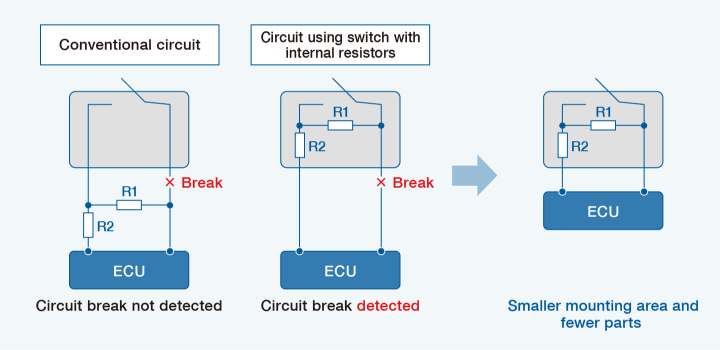Determination of a Circuit Break (or Short Circuit) Using an Internal Resistor Type Detector Switch
A switch is a device used to open and close electrical circuits. But when a fault occurs because the circuit breaks (or shorts), we cannot distinguish between a circuit break (or short circuit) and the switch opening (or closing). It is therefore normal in safety-critical applications, like automobiles, to incorporate into the circuit resistors, which change the output voltage, and have the ECU determine if it was a switching event or a circuit break (or short circuit).
Issue with Conventional Detector Switches
If the circuit break (or short) occurs between the circuit’s resistors and the switch, we cannot distinguish it from the opening (or closing) of the switch.
Solution Case Example
Use of an Alps Alpine switch with internalized resistors made it possible to distinguish between switching events and circuit breaks (or shorts) occurring outside the switch.

Solution Benefits
- More reliable
-
Detects faults with greater certainty due to the ability to detect a circuit break (or short circuit).
- Fewer parts needed
-
Resistors previously mounted outside the switch are no longer required.
- Space savings
-
Extra circuit space created by omitting the external resistors can be removed as switch dimensions have not changed.


